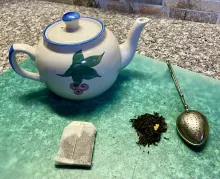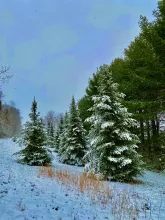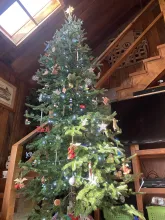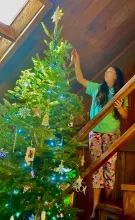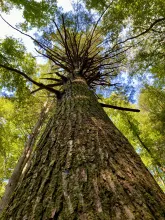I’m sure you have looked up at a gray winter sky and wondered if it will snow. But have you ever wondered why it snows at all? What follows is God’s recipe for a snow, but I must warn you that the ingredients and mixing directions are tricky to try at home.
First, get around a million tons of water, vaporize it, and mix it in the atmosphere. Next, cool the air down, which will cause the humidity to rise. At 100% humidity the air is saturated with water vapor. Further cooling pushes the humidity above 100% and it becomes “supersaturated” and can’t hold any more vapor. Now add a ton or so of microscopic dust particles for the vapor to condense on, and you end up with countless minute water droplets so light they float on air…in other words, a cloud.

